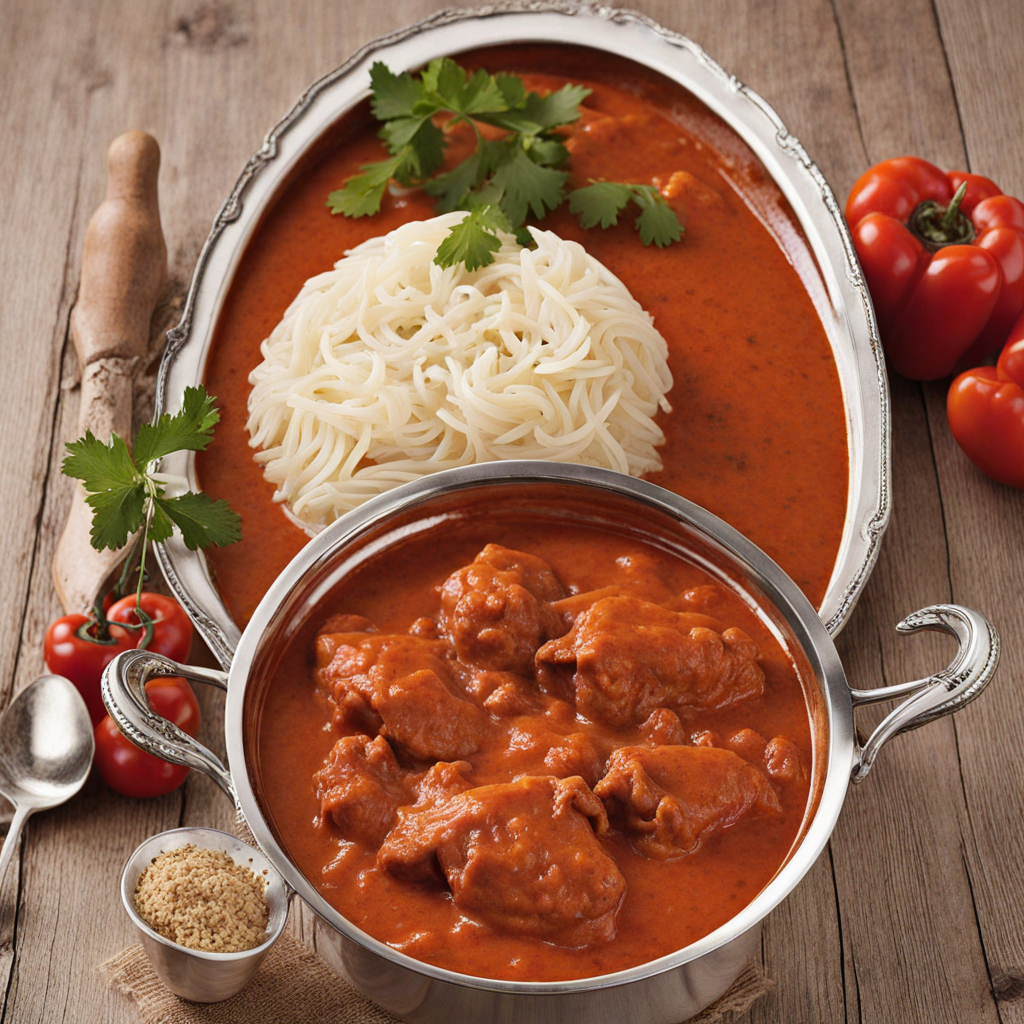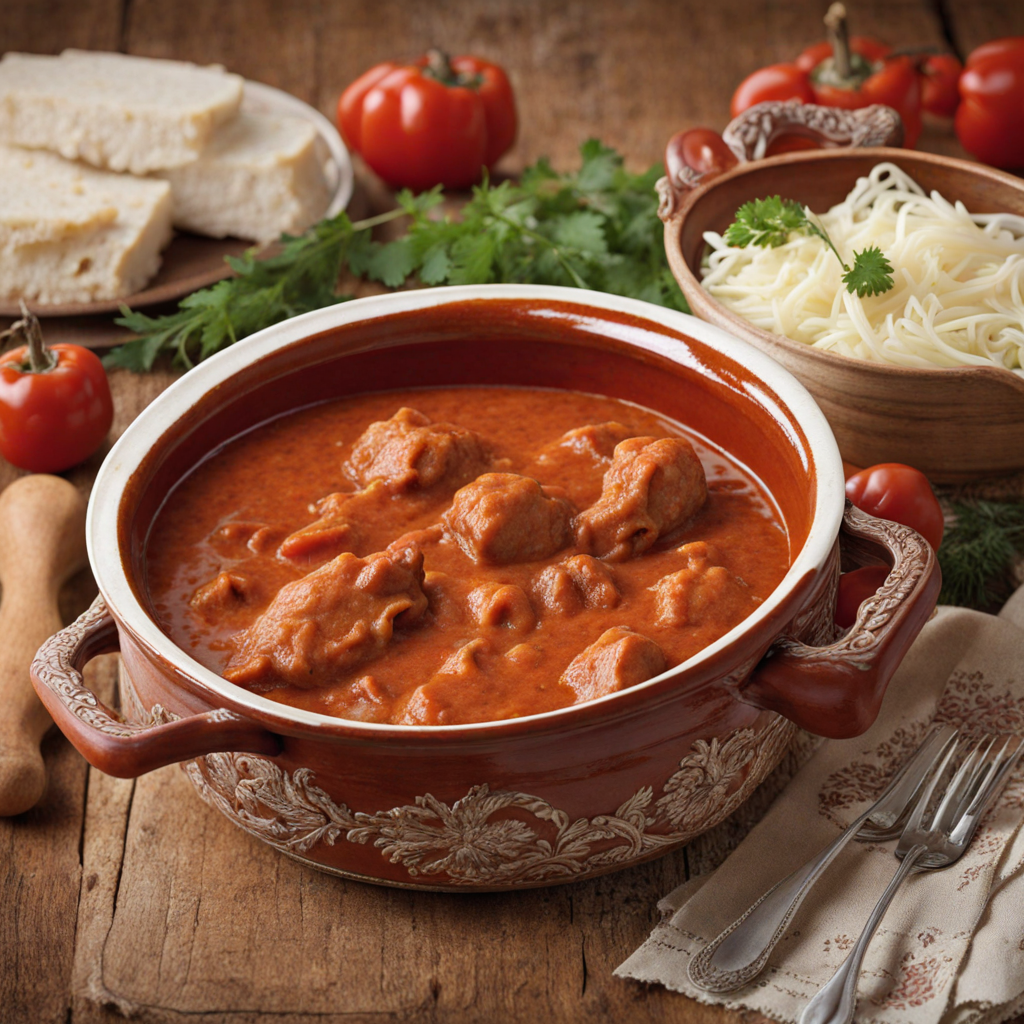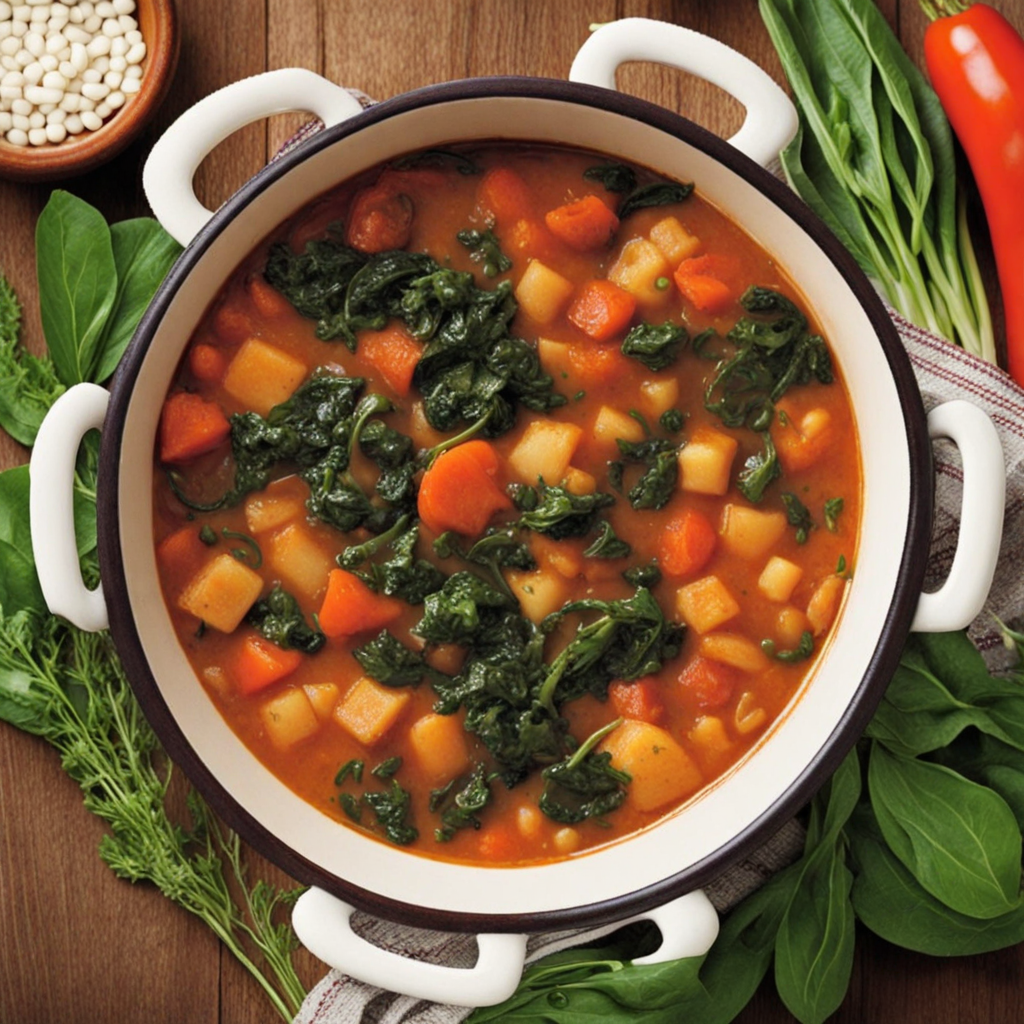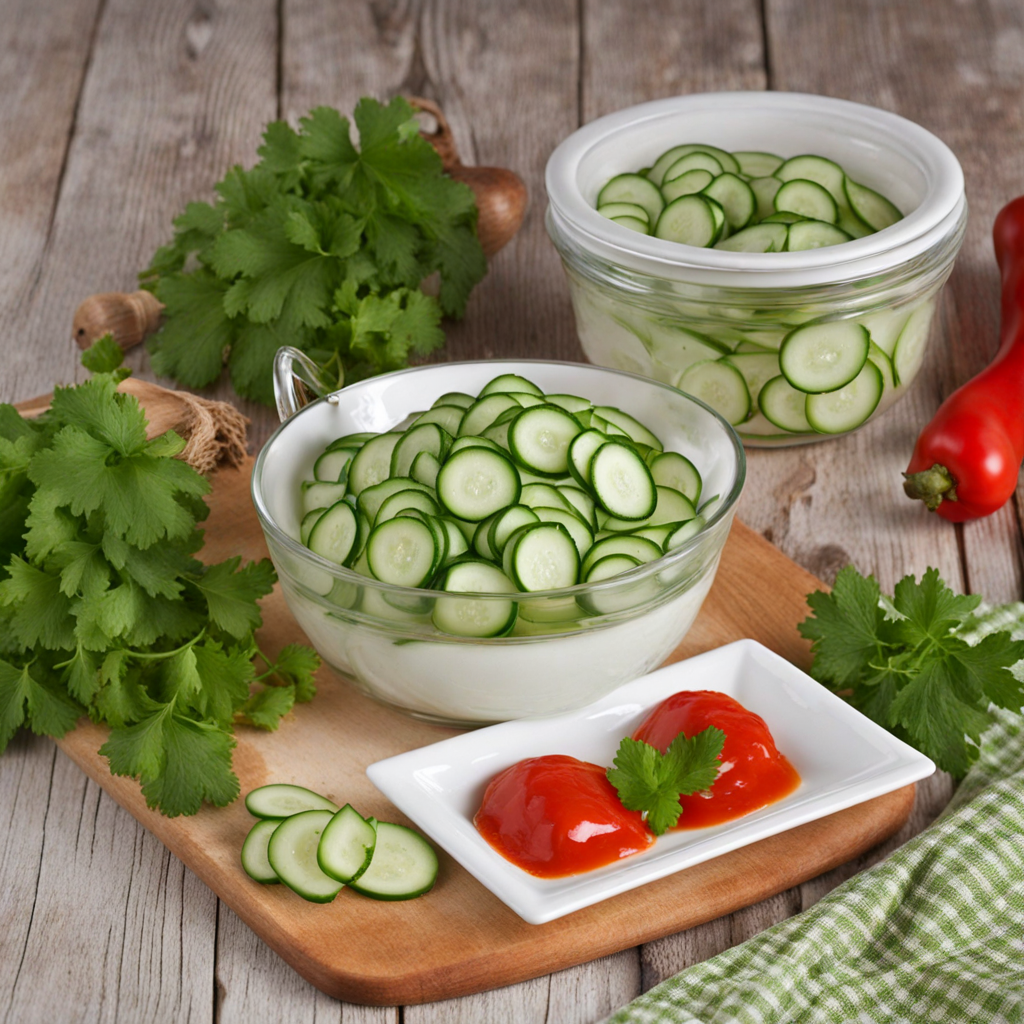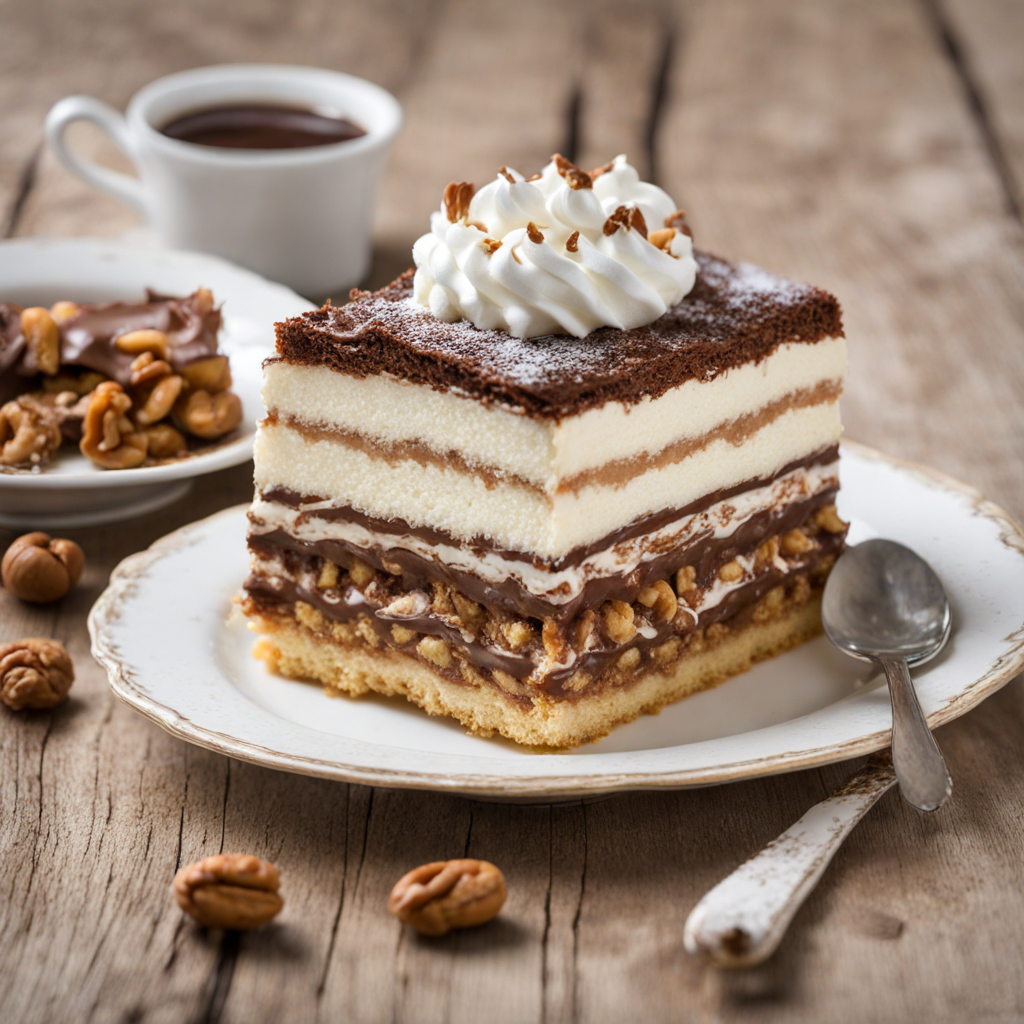Borjúpaprikás
Borjúpaprikás is a delightful Hungarian dish that showcases the rich flavors of paprika, a staple spice in Hungarian cuisine. This hearty meal features tender veal, which is simmered to perfection in a luscious paprika-infused sauce. The vibrant red color of the dish is not only visually appealing but also indicative of the depth of flavor that paprika brings. The veal absorbs the spices and aromatics, creating a tender and succulent texture that melts in your mouth. Accompanying the veal is a medley of ingredients that enhance the dish’s complexity. Onions, garlic, and sometimes bell peppers are sautéed to form a flavorful base, while sour cream is often stirred in towards the end, adding a creamy richness that balances the heat of the paprika. Some variations may include tomatoes or even a touch of white wine, further elevating the dish's taste profile. The use of fresh herbs, particularly parsley, adds a fragrant finish, making each bite an exploration of layers of flavor. Traditionally served with dumplings or egg noodles, Borjúpaprikás is a comforting dish that embodies the warmth of Hungarian home cooking. The pairing of the creamy sauce with the starchy side creates a satisfying meal that is perfect for gatherings or cozy dinners. With its unique combination of spices and textures, Borjúpaprikás invites food lovers to dive into a culinary experience that is both rich in history and bursting with flavor.
How It Became This Dish
Borjúpaprikás: A Culinary Journey Through Hungarian History #### Origins Borjúpaprikás, or veal paprikash, is a traditional Hungarian dish that epitomizes the rich tapestry of flavors and cultural significance associated with Hungarian cuisine. The genesis of this hearty dish can be traced back to the 19th century, a period when Hungary was part of the Austro-Hungarian Empire. It emerged from the rural kitchens of Hungary, where fresh ingredients were plentiful, and the culinary practices were deeply rooted in agricultural traditions. The term “paprikás” refers not only to the dish but to the use of paprika, a spice that has become synonymous with Hungarian cooking. Paprika, derived from dried Capsicum peppers, was introduced to Hungary in the 16th century, likely brought back by the Ottoman Turks. Over time, it became a cornerstone of Hungarian cuisine, influencing numerous dishes, including gulyás (goulash), pörkölt (stew), and of course, borjúpaprikás. #### Cultural Significance Borjúpaprikás holds a special place in the heart of Hungarian culture. It is not merely food; it is a symbol of hospitality and family traditions. Traditionally served at gatherings and celebrations, it represents the warmth and generosity of Hungarian households. The dish is often associated with Sunday family meals, where generations come together to share stories, laughter, and love over a hearty, comforting meal. The preparation of borjúpaprikás is a communal affair, with family members often collaborating in the cooking process. This practice fosters bonds between generations, allowing the younger members to learn the art of cooking from their elders, thus preserving culinary traditions. The dish also plays a role in various Hungarian festivities, including weddings and holidays, where it is often featured as a centerpiece of the meal, embodying abundance and togetherness. #### Ingredients and Preparation The primary ingredient of borjúpaprikás is veal, known for its tenderness and subtle flavor. The dish typically starts with cubed veal, which is sautéed with onions and garlic in a generous amount of lard or oil until golden brown. The star of the show, Hungarian paprika, is then added, giving the dish its characteristic color and flavor. The use of sweet paprika, often enhanced with a touch of hot paprika, allows for a depth of flavor that is both warming and complex. Following the sautéing, the veal is simmered with vegetables such as bell peppers and tomatoes, and often enhanced with a splash of white wine or broth. Sour cream is added towards the end of the cooking process, creating a rich, creamy sauce that perfectly complements the tender meat. The dish is usually served with nokedli (Hungarian dumplings) or egg noodles, which soak up the delicious sauce, making for a satisfying meal. #### Development Over Time The evolution of borjúpaprikás reflects broader changes in Hungarian society and culinary practices. In the early 20th century, as urbanization increased, people began to adapt their traditional recipes to suit the fast-paced lifestyles of city living. This led to the emergence of quicker and simpler versions of borjúpaprikás, often utilizing pre-packaged ingredients or shortcut methods, making it more accessible to those with time constraints. During the communist era, from 1949 to 1989, the availability of ingredients varied significantly due to economic constraints and state regulations. Traditional foods like borjúpaprikás faced challenges as certain ingredients became scarce. However, this period also saw a resurgence of interest in folk traditions and culinary heritage, prompting many to seek out authentic recipes and cooking methods. Home cooks found ways to adapt the dish using what was available, often relying on local produce and meats, which helped to sustain the cultural significance of borjúpaprikás. In the post-communist era, Hungary experienced a culinary renaissance. Chefs began to revisit traditional dishes, often incorporating modern cooking techniques while remaining faithful to the essence of Hungarian flavors. Borjúpaprikás found new life in upscale restaurants, where chefs experimented with presentation and flavor profiles, introducing variations that included unique herbs or additional spices. This revitalization helped to elevate the dish, allowing it to be appreciated by both locals and tourists alike. Today, borjúpaprikás is a celebrated dish not only in Hungary but also in Hungarian communities worldwide. It has become a culinary ambassador of Hungarian culture, showcasing the importance of paprika and the country’s agricultural richness. As Hungarian cuisine gains international recognition, dishes like borjúpaprikás serve as a testament to the enduring legacy of traditional cooking and its ability to adapt and thrive in a globalized world. #### Conclusion Borjúpaprikás is more than just a dish; it is a rich narrative woven into the fabric of Hungarian identity. From its humble rural origins to its status as a cherished family meal, it reflects the history, traditions, and resilience of the Hungarian people. The dish continues to evolve, bridging generations and cultures, while retaining its core essence of warmth, hospitality, and comfort. As we delve into the flavors of borjúpaprikás, we taste not only the ingredients but also the stories of those who have cooked and shared it through the ages. This culinary journey reminds us of the power of food to unite, celebrate, and preserve cultural heritage, ensuring that dishes like borjúpaprikás will continue to be enjoyed for generations to come.
You may like
Discover local flavors from Hungary


